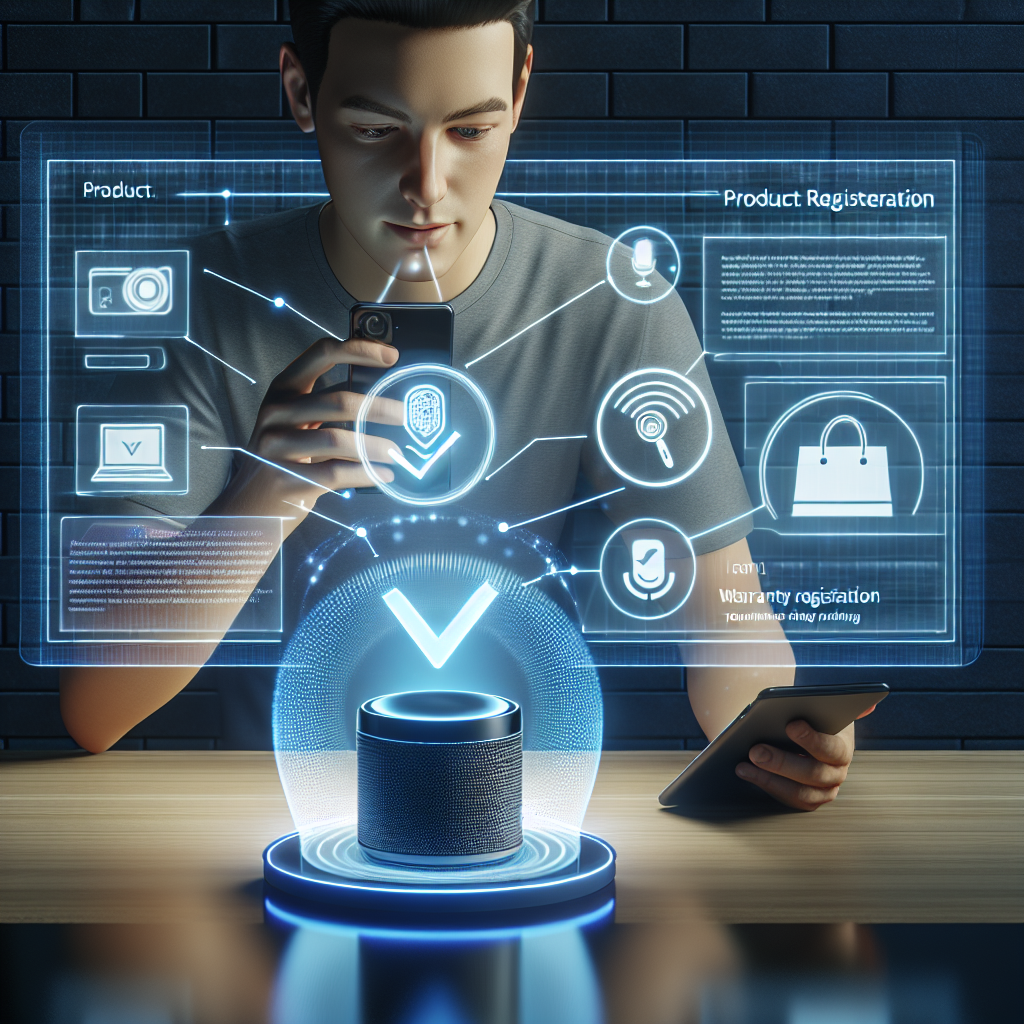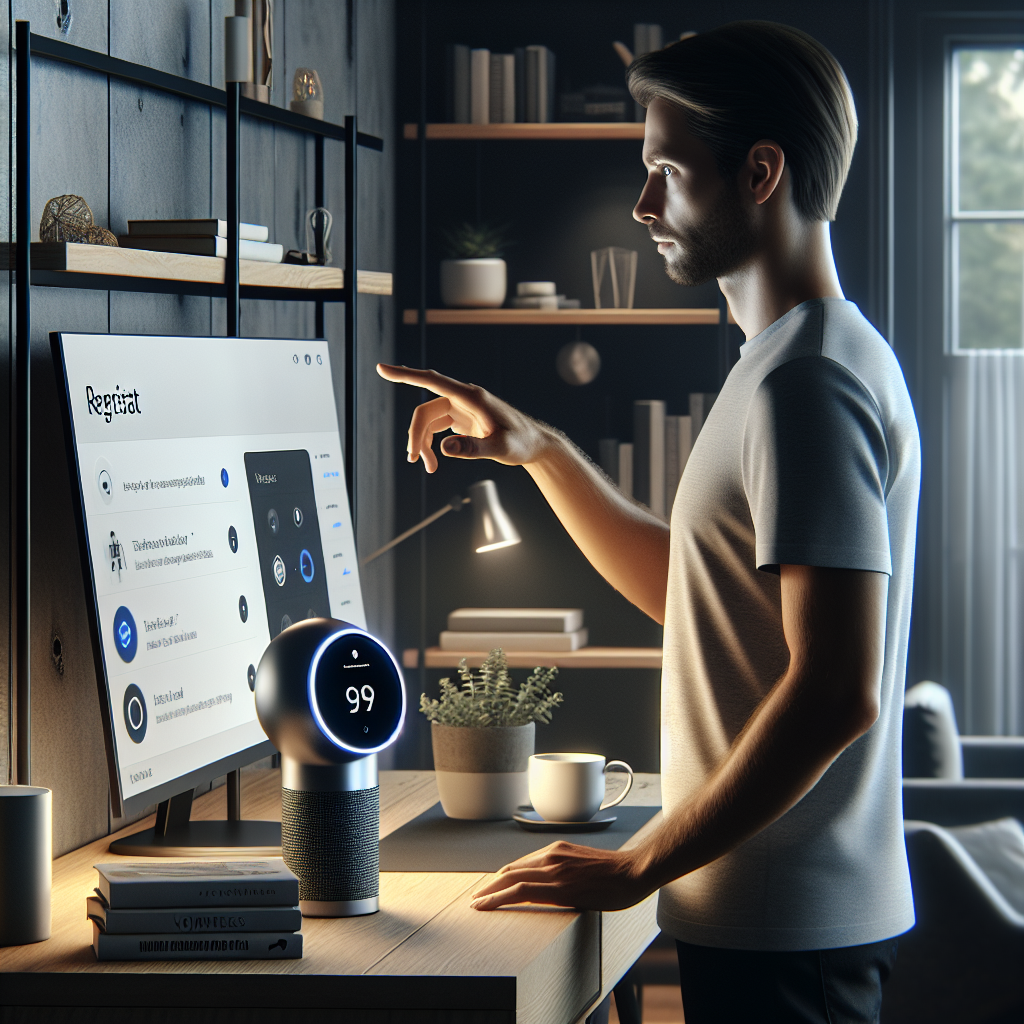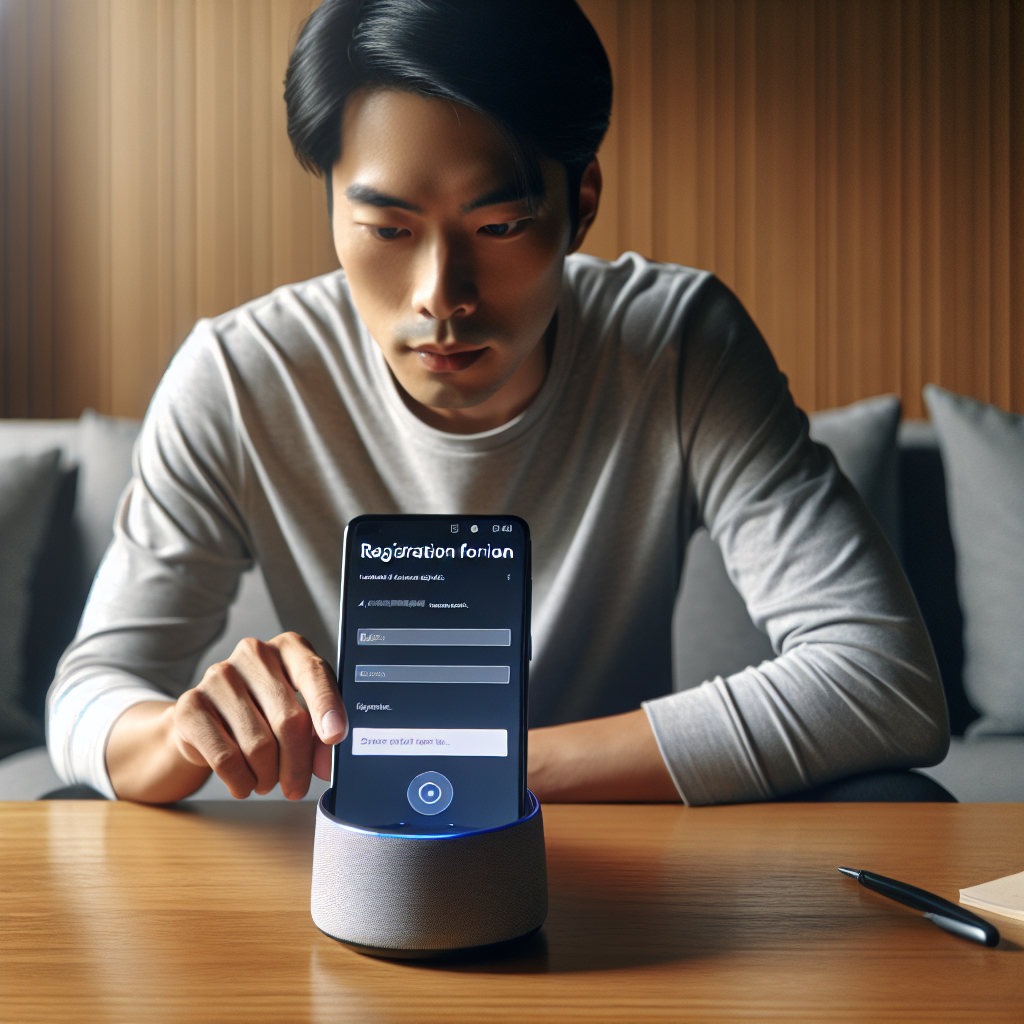
Welcome to the dawn of voice-activated product registration. In the discussion on warranty processes, the advent of voice-activated technology deserves a closer look. This technology, which merges the power of Artificial Intelligence and voice recognition in streamlining product registration, has started to revolutionize the way manufacturers and customers navigate warranty claims and services.

By voice-activating the product registration, corporations can save time otherwise spent on manual data entry and reduce the possibility of human error. It eliminates the need for paper-based warranty registrations and the perilous search for lost warranty cards. Moreover, it enhances customer experience by creating an interface that is easy to interact with, especially for visually impaired and tech-challenged users. This might be the much-needed technology shift that accelerates the digital transformation in warranty claim systems.
However, as with any technology, voice-activated product registration does come with its own challenges. These include data privacy concerns, language barriers, and the necessity of a seamless internet connection. While manufacturers have to overcome these hurdles, there's no denying that this innovative technology has the potential to streamline warranty processes, implicate huge cost savings, and provide a positive experience for the customer.
From your washing machine to your favorite gadget, voice-activated product registration is set to become the next standard, putting to ease your concerns about warranty claim processes. This is a classic example of how technological advancements can shape customer experience and redefine industry practices.
Imagine a world where registering your product for warranty no longer involves studying tiny print on warranty cards or time-consuming online forms. Welcome to the future with voice-activated product registration: a revolutionary way of streamlining your warranty processes. Through simple voice commands, this system starts a seamless and straightforward process. This method not only reduces administrative tasks but also creates a user-friendly experience.
To start, the voice-activated assistant (such as Amazon Echo's Alexa or Google Nest Hub) is utilized. After the user initiates the process with a simple vocal request like "register my product," the assistant requests the necessary details. Here, the user can provide information like the product name, model, purchase date, etc., all using voice commands. It’s as simple as having a conversation!
The core beauty of this system is its ability to communicate with the product's database in real time. Once all the information is received, the system converts the voice data into text, compiling and transmitting it directly to the product registration database. This process reduces the chances of manual error and increases efficiency. Moreover, it enables users to register their devices any time, anywhere.
Once the product's information has been successfully submitted, the system triggers a confirmation process. An automated response is generated, further solidifying the completion of the product registration. The user is then notified through the voice-activated assistant.
With voice-activated product registration, the daunting task of warranty registration is utterly simplified. By completely eradicating the need for manual input, it streamlines the process and makes it user-friendly. This technology truly represents the cutting-edge, a leap forward for future warranty management systems.
In today's technology-driven era, a product warranty has great significance – it gives consumers peace of mind after a purchase. However, the traditional method of registering a product for warranty often involves a tedious, time-consuming process. Thankfully, with the rise of voice technology, a more efficient and user-friendly method, dubbed voice-activated product registration, is emerging to revolutionize the way consumers register their products.

Voice-activated registration serves as an innovative approach to warranty registration that provides myriad benefits. First and foremost, it offers the ease of a hassle-free registration experience. There's no need for filling out multitudinous forms or remembering intricate details. Voice technology, such as Amazon's Alexa or Google Assistant, can complete the registration process with simple voice commands. Whether you’re multitasking or on the go, you can finish the registration without interruption, thereby saving precious time.
Secondly, voice-activated registration enables seamless integration with different devices. Through synchronization with mobile phones, smart speakers, and other IoT enabled devices, it offers the freedom to register products from anywhere, at any time.
Thirdly, the use of voice-activated technology often involves AI, ensuring a personalized and interactive communication. This AI-enhanced personalized touch makes the registration process more engaging and user-oriented, leaving the customer feeling valued and informed.
Lastly, voice-activated product registration has a significant impact on reducing human error. Traditional registration processes, often subject to data entry errors and mistypes, are replaced with an advanced voice recognition and processing system making data input more precise.
In conclusion, the advent of voice-activated product registration translates into a smooth, interactive, and efficient warranty registration process, bringing immense benefits to consumers. With time, we can expect this technology to become mainstream, thereby reshaping the consumer journey and enhancing the post-purchase experience.
Voice-activated technology is thus here to stay and redefine the mechanisms of customer service. As consumers, embracing this change can lead to a multitude of benefits.
Businesses looking to boost efficiency and streamline their warranty processes have a powerful tool readily available: voice-activated product registration. Its integration into a firm's operations can unlock novel avenues for operational optimization, improved customer service, and competitive edge.
Voice-activated product registration uses advanced voice recognition techniques to facilitate the product registration and warranty activation process. Customers can interact with a voice-activated system, providing necessary information verbally to register their product and initiate their warranty. For deeper understanding, a tutorial on voice recognition technology can provide more insight.
One notable advantage of voice-activated registration is the speed of processing. Faster registration completion times elevate customer satisfaction and reduce the burden on customer service, freeing up resources for other critical tasks. Statistics validate the impact of voice technology on customer service and efficiency.
Another beneficial aspect is data accuracy. With voice recognition, businesses can access clearer, reliable data as voice inputs can minimize errors that are otherwise common in written registrations. This improves customer profiling, analytics, and business intelligence. Cases that demonstrate the improvement of data accuracy with voice recognition confirm this.
Furthermore, voice-activated registration streamlines the warranty process, making it customer-friendly. Instead of navigating through complex procedures, customers only need to communicate the necessary information verbally, thereby increasing customer loyalty. Companies experiencing exceptional growth in customer retention due to warranty process simplification with voice technology illustrates this.
In conclusion, businesses can not only simplify their warranty procedures but also witness operational efficiency, improved data precision, enhanced customer satisfaction, and higher levels of loyalty with voice-activated product registration. Embracing this technology signifies a significant step towards future-proofing operations, ensuring that business processes remain at the cutting edge of today's rapidly evolving digital world.
In today's rapidly digitizing world, companies across various industries have been quick to identify the potential of automated technologies for streamlining their product registration and warranty processes. The introduction of voice-activated product registrations is an innovation that many companies have successfully implemented, proving beneficial for both the business and its customers.

One industry where this technology has taken off is the consumer electronics sector. Leading brands like Samsung and Apple have integrated voice-activated assistance into their product registration process, allowing their consumers to register their newly purchased devices through platforms like Bixby or Siri. This intuitive process has been praised for its convenience and easy accessibility, enhancing the overall customer experience.
In the automotive industry, giants like Ford and BMW have also introduced voice-activated product registrations. The customer speaks to an inbuilt system within the car to register their new vehicle, thereby initiating the warranty period. This has helped in ensuring accuracy, preventing any discrepancies that could arise from manual data entry.
Beyond these industries, the implementation of such systems in areas like home appliances and health equipment has also seen success. In essence, the advantages of voice-activated product registrations are impossible to ignore: they offer speed, efficiency and a supremely user-friendly process that appeals to today's tech-savvy consumers. As more and more businesses in various sectors begin to implement these intelligent systems, it appears that voice-activated technology could revolutionize the way we approach product registration and warranties.
These are just some examples of how voice-activated systems have been adopted successfully. There is still a vast potential for other industries to integrate this technology into their processes, making it an exciting frontier for innovation.
A seismic shift is happening in the way consumers interact with products and services. The introduction of voice-activated technology is revolutionizing businesses including warranty processes. The future trends in this technology offer great potential to streamline product registration and warranty claims for the customers.
Voice-activated digital assistants, such as Amazon Alexa or Google Home, are predicted to develop more advanced cognitive capabilities, allowing them to understand and process complex verbal instructions. For instance, users could register their products or initiate warranty claims just by communicating their needs aloud. It'll significantly cut the time and effort required for manual completion of forms, improving customer experience and satisfaction.
Another promising trend is the integration of voice-activated technology with the Internet of Things (IoT). This fusion will offer real-time tracking of products and their warranties. Users could simply ask their device about the status of their warranty or when it will expire, ensuring they never miss a claim window again.
Moreover, the development of Voice User Interface (VUI) will enhance user-device interaction. This interface listens to the intonations and emotions in the user's voice and responds accordingly. So, if a user sounds frustrated while initiating a warranty claim, the VUI can guide them kinder and faster through the process. Understanding Voice User Interface will be key to future trends in this technology.
Combining machine learning with voice-activated technology is also on the horizon. Predictive models could identify potential product failures or warranty issues even before they occur, alerting users to take action. This proactive approach will reduce the need for troubleshooting and product returns and will benefit both consumers and companies.
Finally, voice technology will become even more ubiquitous. Future trends suggest product registration and warranty claims will become seamless with voice-activated smart homes and connected cars.
In conclusion, the trends in voice-activated technology are aimed at streamlining the warranty process for the consumer, making it more efficient and user-centric. The future of this interactive technology promises a more conversational and intuitive approach to product registration and warranty processes, shifting the focus from tedious tasks to engaging user experience.
Start your free trial for My AI Front Desk today, it takes minutes to setup!








